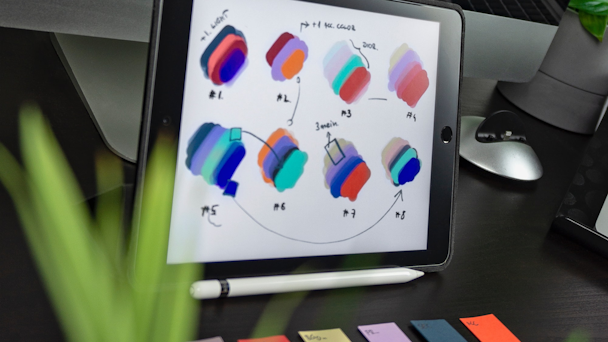3 key habits of design-forward brands – and how CMOs can lead with guardrails
Canva chief marketer officer Zach Kitschke makes the case for baking design-driven thinking into the heart of an organization.

/ Balázs Kétyi
Marketing and design are no longer just for ‘creative types.’ With every company now a content company, employees across departments are being called upon to create strong visual content such as sales assets, social posts and presentations for internal and external use. Any employee who shares this content is now effectively in marketing, and brand consistency must be paramount.
That means it’s up to CMOs to build the habits and guardrails that allow employees to get creative while staying on-message and on-brand. Extensive research has shown that we process and retain information more easily in visual form. At the same time, brands are increasingly interacting with customers through social channels like Instagram and TikTok. Images and video drive an increasing proportion of modern communications.
Advertisement
It’s been my experience that in most organizations, design is the responsibility of overburdened brand teams or a third-party agency. But alone, these professionals can’t meet the volume and speed required to meet all the content needs of a business. To ensure their organizations thrive in this environment, brand leaders must empower employees across all departments to create engaging content.
Here are three tips for how marketing leaders and brand chiefs can propagate the habits, rituals and workflows that break down barriers to strong design — and do so in a way that allows them to maintain control of their brand.
Advertisement
Teach design literacy
Today’s workplace has a generalist culture in which employees are expected to be competent in a range of areas outside their main job, and design literacy is increasingly one of those skills.
Nowadays, employers assume staff will be able to present ideas and proposals in visually compelling ways. This includes assets for external consumption such as social posts, which are crucial: 53% of marketers say content marketing will be the most important skill for their team’s success over the next five years, according to research by martech firm Drift.
The onus is on CMOs and their companies to teach employees how to make their visual communications effective and impactful. At my company, all new hires go through our ‘design school,’ where we teach skills and habits like creating slides with a narrative versus just sharing information – or how to use visual elements to bring a concept to life, rather than relying on hard-to-parse words on the page. Our creative teams share weekly design tips and examples of what other employees have created, to show what’s possible and give employees something to aspire to. We strive to make this training accessible and fun, so it doesn’t feel like one more task added to their plates.
This kind of education should be ongoing. For external assets, in particular, it’s important to cultivate a culture of learning, so teams are constantly looking at what content formats are performing across channels and seeking inspiration from other brands too. Creating regular forums to share insights and learnings, and documenting creative experimentation in a central place, means everyone is benefiting from the team’s collective wisdom and each campaign builds on the last.
Suggested newsletters for you
Make consistency a breeze
Don’t create a 200-page brand guidelines document. Most employees won’t read or know how to use it. Instead, create templates that ensure brand assets like fonts, colors, logos and other graphics are a snap to locate and use. Make these widely available across departments for sales presentations, social media graphics, marketing reports, brainstorming documents and any other collateral that expresses your brand.
The key is to make it easy for employees to maintain consistency. Your professional designers should not have to spend their valuable time constantly correcting fonts and color schemes. Allow teams to experiment while remaining consistent — freeing up your professional designers’ time for more complex work that further builds the company’s brand.
Instill design-first thinking
With hybrid work now the norm, companies should embrace ‘remote creativity’ to operationalize design-minded routines. According to LinkedIn research, two-thirds of CMOs fear that remote work will stifle creativity, and building habits and rituals that emphasize the power of good design can address these concerns.
For example, a leader might encourage employees to create visual templates for project decks and award prizes for the best. Alternatively, provide a template for branded backgrounds that matches an employee’s team and have them put their own spin on it to flex their design skills. Recognize and celebrate people who show off their personalities visually.
The proliferation of high-quality displays and digital communication have made visuals central to the way we communicate inside and outside of work. Much as Google revolutionized business apps 10 years ago with intuitive, attractive interfaces, companies like Tesla, Apple and Instagram have made strong design a requirement for communications. This visual content is intricately linked to the perception of a brand, and CMOs and chief creative officers must take control and ensure employees have the mindset and the ability to make engaging, on-brand content every time.
Zach Kitschke is chief marketing officer at Canva.
